
When you pick up a prescription, you might not think about why one version of a drug costs $5 and another costs $150-even if they do the exact same thing. That’s not an accident. It’s the result of a complex economic system where cost-effectiveness analysis decides what gets covered, what gets prescribed, and who pays. For generic drugs, this analysis isn’t just about saving money-it’s about understanding whether the savings are real, sustainable, and actually improving patient care.
What Cost-Effectiveness Analysis Really Measures
Cost-effectiveness analysis (CEA) isn’t a magic formula. It’s a way to compare the price of a treatment against the health benefits it delivers. In simple terms: how much does it cost to give someone one more year of healthy life? That’s measured in something called a quality-adjusted life year, or QALY. For generic drugs, the question becomes: does switching from a brand-name pill to a generic version give you the same health outcome at a fraction of the cost? The answer is almost always yes. According to the FDA, when the first generic version of a drug hits the market, the brand-name price drops by about 39%. When six or more generics are available, the price falls more than 95% below the original. That’s not inflation-it’s competition. And CEA is the tool that proves those savings aren’t just nice to have-they’re essential.Why Some Generics Cost Way More Than Others
Not all generics are created equal. A 2022 study in JAMA Network Open looked at the top 1,000 generic drugs in the U.S. and found something shocking: some generics were over 15 times more expensive than other drugs in the same therapeutic class that worked just as well. These weren’t brand-name drugs. They were generics-same active ingredient, same FDA approval, same clinical effect. The biggest price gaps happened when doctors switched from one generic to another that was technically different-say, changing from a tablet to a capsule, or from one manufacturer’s version to another’s. The median price difference? 20 times higher. Meanwhile, two versions of the exact same drug from different companies? Only 1.4 times more expensive. That’s not a difference in quality. That’s a difference in market power. This isn’t random. Pharmacy Benefit Managers (PBMs), who negotiate drug prices for insurers, often profit from the gap between what they pay pharmacies and what insurers pay them. This is called “spread pricing.” If a PBM can get a pharmacy to pay $10 for a generic but charge the insurer $50, they pocket $40-even if a $3 version exists. CEA doesn’t always catch this because it’s focused on drug cost, not how the middlemen are paid.How Generic Prices Drop Over Time
The moment a patent expires, the price begins to tumble. The NIH found that with two generic competitors, prices fall 54% below the original brand price. With four competitors, it’s 79%. But here’s the problem: most cost-effectiveness studies don’t account for this. A 2021 ISPOR conference review found that 94% of published CEAs for drugs still under patent didn’t even try to predict what prices would be after generics entered the market. That’s like trying to plan a road trip without checking if the highway will be open next month. If you assume a drug will stay expensive because no generics exist yet, you’ll wrongly decide it’s not cost-effective-until suddenly, it is. And by then, the damage is done: patients got the expensive version, insurers paid more, and decision-makers missed the chance to save millions. The VA Health Economics Resource Center says analyses of drugs near patent expiration must include expected price drops. Otherwise, you’re biasing the whole system against generics before they even have a chance.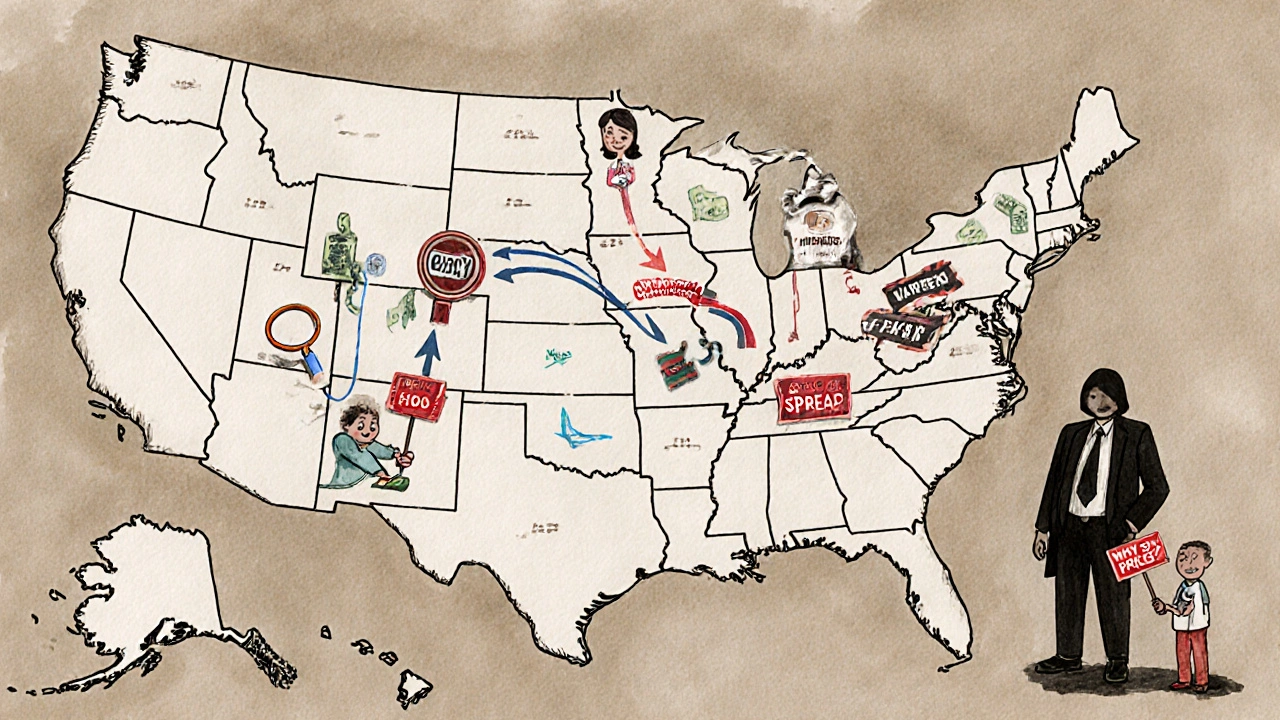
Therapeutic Substitution: The Hidden Savings Opportunity
Sometimes, the best cost-saving move isn’t switching to a generic version of the same drug-it’s switching to a different drug altogether that works just as well. That’s called therapeutic substitution. The same JAMA study found that replacing high-cost generics with lower-cost alternatives in the same drug class could cut spending by nearly 90%. In one example, total spending on 45 high-cost generics dropped from $7.5 million to just $873,711 when cheaper, equally effective options were used instead. That’s not a 10% saving. That’s an 88% saving. This isn’t theoretical. It’s happening right now. But most formularies still list the expensive generic because it’s been there longer, or because a PBM gets a bigger cut. CEA should be pushing for the cheapest effective option-not the one that’s easiest to keep on the list.Why Industry-Funded Studies Often Skew Results
There’s a reason why studies funded by drug companies tend to show their products as more cost-effective. It’s not always fraud-it’s framing. If a study compares a new brand-name drug to an older generic that’s been priced artificially high, the new drug will look like a better value-even if a cheaper generic exists. The Health Affairs review from 2000 showed this pattern clearly: industry-funded studies were far more likely to report favorable cost-effectiveness results. That’s why some health systems now require independent analysis before adding a drug to their formulary. It’s not about distrust-it’s about making sure the numbers reflect reality, not marketing.What Needs to Change
The system isn’t broken. It’s just outdated. CEA for generics needs to evolve in three key ways:- Forecast generic entry. Every analysis must include projected price drops after patent expiration. Don’t assume a drug will stay expensive-plan for it to get cheaper.
- Compare across therapeutic classes. Don’t just compare a brand to its generic. Compare all drugs in the same class, even if they’re not exact copies. The cheapest effective option wins.
- Account for PBM pricing distortions. If a $3 drug is being sold for $50 because of spread pricing, that’s not a drug cost-it’s a system flaw. CEA should flag this, not ignore it.
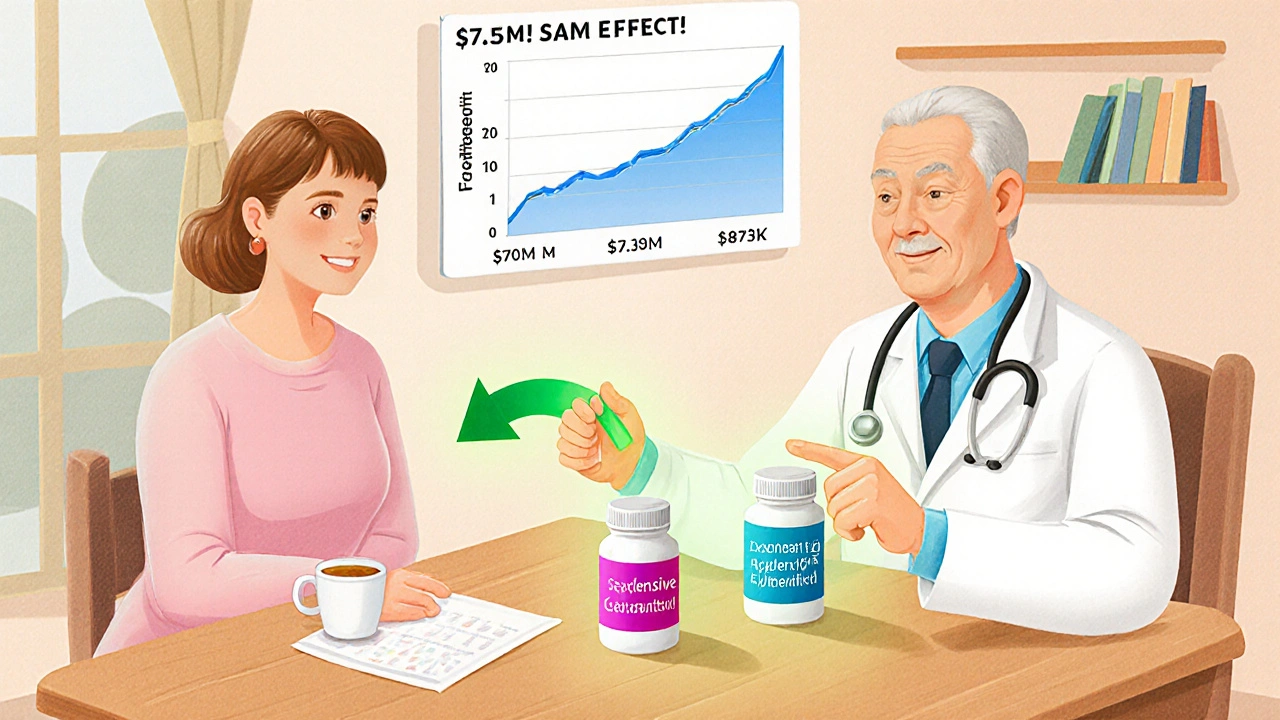
The Bigger Picture: Why This Matters
Generic drugs saved the U.S. healthcare system $1.7 trillion between 2007 and 2017. In 2022, they made up 90% of all prescriptions but only 17% of total drug spending. That’s the power of competition. But if we keep using outdated cost models that ignore price drops, therapeutic alternatives, and middleman profits, we’re leaving billions on the table. Patients pay more. Insurers pay more. And the system pays more-through higher premiums, higher taxes, and delayed care. The goal isn’t just to find the cheapest drug. It’s to find the most value. And value isn’t just price. It’s access, reliability, and fairness.What You Can Do
If you’re a patient: ask your pharmacist if there’s a cheaper generic alternative-even if your doctor prescribed a specific brand. Many times, the difference is just a label. If you’re a provider: don’t default to the first generic on the list. Check if a lower-cost therapeutic alternative exists. The clinical outcome won’t change. The bill will. If you’re a policymaker or payer: demand that cost-effectiveness models include future generic pricing, therapeutic substitution options, and transparency in PBM pricing. Don’t let outdated analysis hold back real savings.Final Thought
Generic drugs aren’t just cheaper versions of brand-name drugs. They’re proof that competition works. But only if we measure them right. Cost-effectiveness analysis should be a tool for fairness-not a way to lock in high prices under the guise of science.Are generic drugs as effective as brand-name drugs?
Yes. The FDA requires generics to have the same active ingredient, strength, dosage form, and route of administration as the brand-name drug. They must also meet the same strict standards for quality, purity, and performance. Bioequivalence studies prove they work the same way in the body. The only differences are in inactive ingredients like fillers or coatings-which don’t affect how the drug works.
Why do some generic drugs cost more than others?
Price differences between generics come from market factors, not quality. Fewer manufacturers mean less competition, so prices stay higher. Some generics are priced high because Pharmacy Benefit Managers (PBMs) profit from the gap between what they pay pharmacies and what insurers pay. This is called spread pricing. Also, changes in dosage form-like switching from a tablet to a capsule-can lead to higher prices even if the drug is identical.
How does patent expiration affect generic drug prices?
When a patent expires, other companies can legally make and sell the same drug. The first generic usually cuts the price by 30-40%. With five or more competitors, prices drop over 95% below the original brand price. This is why cost-effectiveness analyses must forecast these drops-otherwise, they wrongly assume the drug will stay expensive.
What is therapeutic substitution, and why does it matter?
Therapeutic substitution means switching from one drug to another in the same class that works just as well but costs less. For example, replacing a high-cost generic statin with a lower-cost one that has the same effect. A 2022 study found this could reduce spending by nearly 90% in some cases. It matters because it’s one of the easiest ways to save money without hurting patient outcomes.
Why do some insurers still cover expensive generics?
Often, it’s because Pharmacy Benefit Managers (PBMs) profit from the price difference between what they pay pharmacies and what insurers pay. If a cheaper generic exists but isn’t on the formulary, it’s usually because the PBM gets a bigger cut from the expensive version. Cost-effectiveness analysis should expose this-but many systems still rely on outdated or biased data.
Can cost-effectiveness analysis be manipulated?
Yes. Studies funded by drug companies are more likely to show favorable results because they often compare their product to outdated or overpriced alternatives. Some analyses ignore future generic entry, making a new drug look more cost-effective than it really is. Independent reviews and transparent data are key to avoiding bias.
How do European countries handle generic drug cost analysis differently?
Most European health technology assessment (HTA) agencies use formal cost-effectiveness analysis for all new drug approvals, with over 90% routinely applying it. They often require manufacturers to submit price commitments and forecast price drops after generic entry. In contrast, only about 35% of U.S. commercial payers use formal CEA, leading to more inconsistent coverage decisions and higher overall costs.



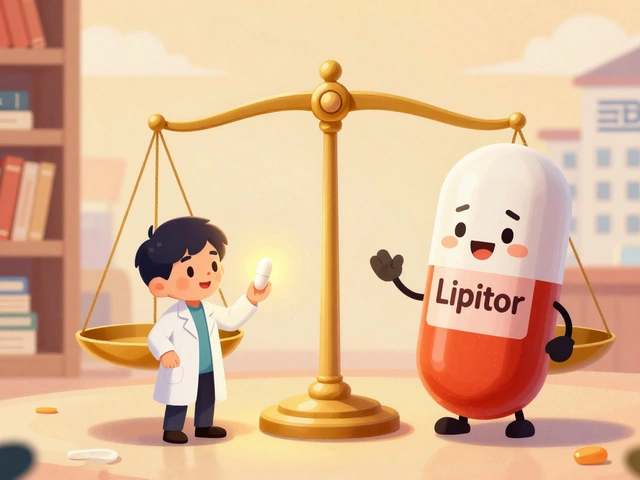
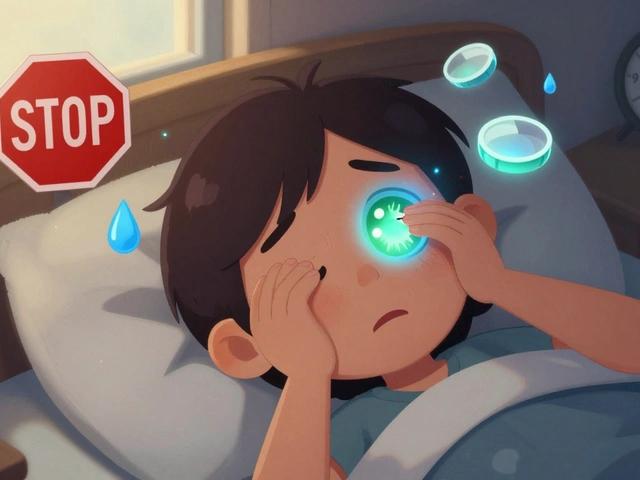
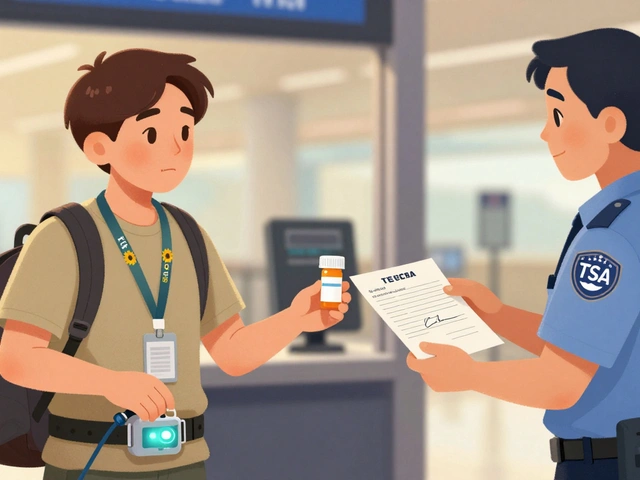
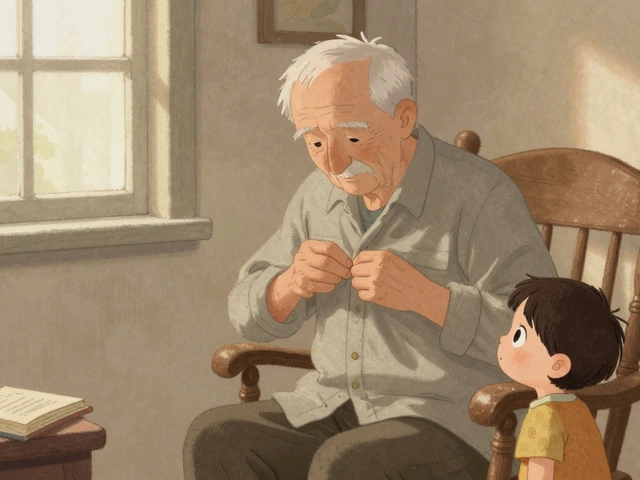
Jennifer Walton
November 15, 2025 AT 22:26Generic drugs work. The science is settled. The price chaos? That's a market failure, not a medical one.
Stop pretending it's about efficacy when it's about who gets paid.
Simple.
Kihya Beitz
November 16, 2025 AT 05:22Lmao so now we’re supposed to trust the FDA and ‘competition’? Tell that to the guy paying $47 for a generic pill that costs $2 to make.
PBMs are the real villains here - they’re not middlemen, they’re bloodsuckers with Excel sheets.
And don’t even get me started on how ‘cost-effectiveness’ studies are just pharma’s PR department with a calculator.
It’s all rigged. The system is a joke. You think this is healthcare? Nah. It’s a casino where the house prints the pills.
And we’re the suckers buying chips with our insulin.
Pathetic.
Also, who approved this article? Someone who gets a commission from PBM stock? 😏
Shyamal Spadoni
November 16, 2025 AT 11:16yo i been thinkin bout this and its like the whole us healthcare system is a pyramid scheme man
first they patent the drug for 20 years then they let generics in but only like 3 companies make it and they all collude like secretly
and then the pbms they dont even care about the drug they just want the spread price so they make the pharmacy pay 10 and charge the insurer 50 and pocket 40
and the cea studies? lol they dont even count the future price drop so they say the drug is too expensive when it aint
and then the doctors keep prescribing the expensive one because its on the formulary and the formulary is controlled by the pbms who got kickbacks
and the fda says its safe but they dont regulate the pricing
and the patients? they just die quietly
its all connected man
the pharma the pbms the insurers the gov
its all one big machine grinding us down
and no one talks about it because they all get paid
and if you question it you're a conspiracy nut
but im not a nut im just awake
and you? you still think generics are cheap?
lol
watch your next rx bill
its gonna hurt
Ogonna Igbo
November 17, 2025 AT 16:59Why do Americans always think their system is the best? In Nigeria we don’t have this mess. Our generics are cheap because we import directly from India and bypass all the middlemen.
Pharmacy Benefit Managers? What kind of capitalist nightmare is that?
Here in Africa, we know that medicine is a right, not a profit center.
You people pay $150 for a pill that costs 50 cents to make? And you call that healthcare?
Stop blaming the system. Blame your greed.
Our doctors don’t need cost-effectiveness analysis. They just give the cheapest thing that works.
And guess what? People live.
Y’all need to stop being so soft.
Stop crying about prices. Fix the system.
Or move to a country that doesn’t treat medicine like a luxury car.
BABA SABKA
November 17, 2025 AT 20:29Let’s get real about the economics here. The entire generic drug supply chain is distorted by vertical integration and rent-seeking behavior from PBMs.
What we’re seeing isn’t market competition - it’s oligopolistic pricing with regulatory capture.
The FDA’s bioequivalence standards are technically sound, but the reimbursement architecture is fundamentally misaligned with therapeutic outcomes.
When formularies prioritize legacy products over cost-minimizing alternatives, you’re not optimizing for health - you’re optimizing for profit extraction.
Therapeutic substitution isn’t just a cost-saving tactic - it’s a clinical imperative.
And if your CEA model doesn’t incorporate dynamic price elasticity post-patent cliff, you’re not doing analysis - you’re doing advocacy for the status quo.
It’s not that generics are undervalued - it’s that the entire reimbursement infrastructure is designed to obscure value.
And until we de-couple pricing from PBM incentives, we’re just rearranging deck chairs on the Titanic.
Also, Europe does this right because they treat HTA as a public good, not a lobbying opportunity.
Y’all need systemic reform, not Band-Aid fixes.
Chris Bryan
November 19, 2025 AT 15:57Who wrote this? Some woke pharma shill trying to make generics look good?
Ever hear of China making counterfeit generics? Or how the FDA lets stuff in from India that’s contaminated?
And you think PBMs are the problem? Nah. It’s the government letting foreign labs make our pills.
Our doctors used to prescribe American-made drugs. Now? We’re trusting some factory in Mumbai with our lives.
And you want to cut costs by switching to generics? What if the active ingredient is 80% pure?
Who tests that?
Not the FDA. They’re underfunded.
And now you want us to trust a $3 pill because some study says it’s ‘equivalent’?
That’s not science. That’s suicide.
And don’t even get me started on how the VA is pushing this stuff on veterans.
This isn’t saving money - it’s sacrificing health.
And you call that progress?
Jonathan Dobey
November 19, 2025 AT 17:18Ah yes, the sacred calculus of QALYs - the cold, sterile math of human life reduced to a spreadsheet cell.
How poetic. We’ve turned healing into a spreadsheet game where the winner is the one who squeezes the most life-years out of the least dollars.
But tell me - when the patient with stage IV cancer gets the $3 generic instead of the $150 one - does the QALY still count if they die three months sooner?
Or is that just a ‘statistical blip’ in the model?
And let’s not pretend PBMs are the only villains.
The entire edifice of modern medicine is built on the illusion that biology can be optimized like a supply chain.
We don’t need more cost-effectiveness analysis.
We need less hubris.
Medicine isn’t a commodity.
It’s a covenant.
And when we start pricing dignity, we’ve already lost.
But hey - at least your insurance premium went down.
Congratulations, capitalist monk.
Enjoy your asceticism.
Jessica Chambers
November 20, 2025 AT 09:15My pharmacist just switched me from the $48 generic to the $4 one last week. Same pill, different label.
My co-pay dropped by $44.
And no, I didn’t feel any different.
Also, my doctor didn’t even know I was on the expensive one until I asked.
So… yeah.
¯\_(ツ)_/¯
ASHISH TURAN
November 22, 2025 AT 04:41Just wanted to add that in rural India, we see this every day - a single generic manufacturer dominates a drug class because others can’t afford to enter the market. So even if it’s ‘generic,’ it’s still expensive due to monopoly.
That’s why price controls and bulk procurement are so critical.
CEA needs to include market concentration metrics, not just drug cost.
Also, doctors need training to recognize therapeutic alternatives - many don’t know what’s available.
It’s not just about money. It’s about awareness.
And yes, the PBM system is broken. But fixing it requires policy, not just patient advocacy.
Good post overall. Needed this.
Ryan Airey
November 23, 2025 AT 03:44You’re all missing the point. This isn’t about generics. It’s about control.
Who gets to decide what you take? The FDA? The PBM? The doctor? The algorithm?
It’s not about price. It’s about power.
And if you think this is just a ‘cost-effectiveness’ issue, you’re the problem.
Real change means dismantling the entire pharmaceutical-industrial complex.
Not tweaking a model.
Not asking for ‘transparency.’
Not switching pills.
It means ending patents. Nationalizing production. Banning spread pricing. Full stop.
Everything else is theater.
And you’re all just applauding the actors.